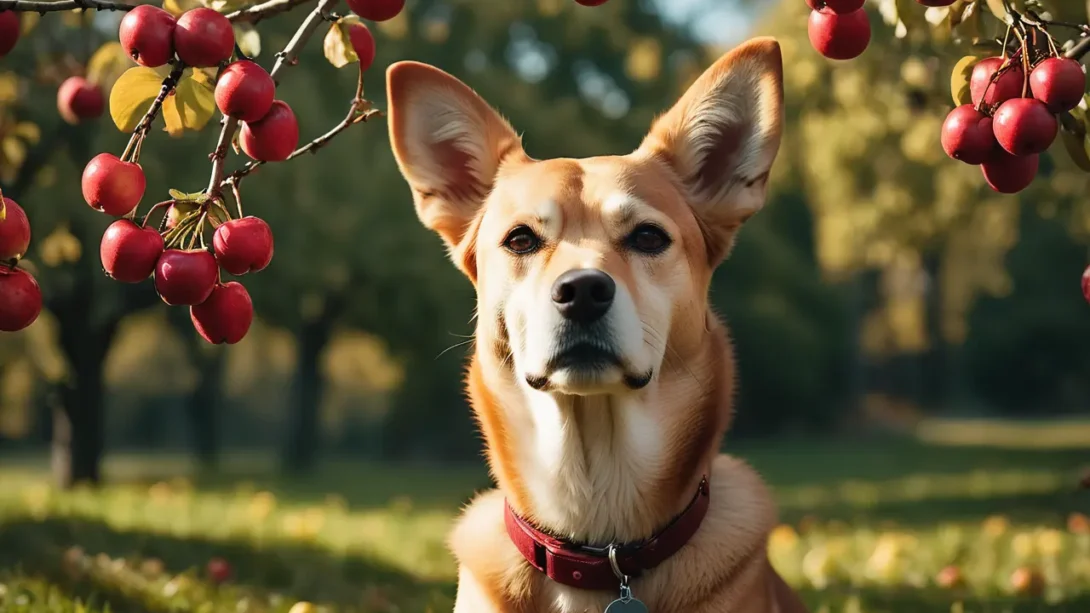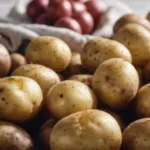Crabapples, with their vibrant colors and tart flavor, are a common sight in landscapes and gardens. While these small fruits are often enjoyed by humans in jams, jellies, and pies, dog owners may wonder whether they are safe for their furry companions to consume. In this article, we delve into the potential risks and benefits of crabapples for dogs, providing insight into the factors that pet owners should consider when it comes to incorporating these fruits into their pets’ diets.
Crabapples
Before we discuss the safety of crabapples for dogs, let’s first understand what crabapples are and their characteristics. Crabapples are small, tart fruits that belong to the genus Malus, which includes apple trees. They are often smaller in size than traditional apples and are commonly used in culinary applications, such as preserves and cider. Crabapple trees are prized for their ornamental value, with their colorful blossoms and fruit-bearing branches adding beauty to landscapes and gardens.
Concerns About the Safety of Crabapples for Dogs
As responsible pet owners, it’s natural to be concerned about the safety of the foods we offer to our dogs. While many fruits and vegetables are safe for canine consumption in moderation, some may pose risks due to their potential toxicity or indigestibility. Crabapples, with their tartness and seeds, raise questions about whether they could be harmful to dogs if ingested. Understanding the potential risks and benefits of crabapples for dogs is essential for making informed decisions about including these fruits in their diet.
Thesis Statement
In this article, we will explore the potential risks and benefits of crabapples for dogs, examining the identification of potentially harmful compounds, clinical signs of toxicity, factors influencing exposure, potential health benefits, and strategies for prevention and management. By gaining a comprehensive understanding of the risks and benefits associated with crabapples, dog owners can make informed choices to ensure the well-being and safety of their furry companions.
Potential Risks of Crabapples for Dogs
While crabapples may seem harmless, they do pose some potential risks to dogs if ingested in large quantities or in certain forms:
- Identification of Potentially Harmful Compounds:
- Crabapples, like other fruits in the Malus genus, contain cyanogenic glycosides, which can release cyanide when metabolized by the body. The seeds, stems, and leaves of crabapple trees contain higher concentrations of these compounds compared to the flesh of the fruit.
- The seeds and pits of crabapples, if ingested in large quantities, can also pose a choking hazard or cause gastrointestinal obstruction in dogs.
- Clinical Signs of Toxicity in Dogs:
- Gastrointestinal Upset: Consumption of crabapples, especially in large amounts or with seeds intact, can lead to symptoms such as vomiting, diarrhea, abdominal discomfort, and decreased appetite in affected dogs.
- Cyanide Poisoning: In severe cases, ingestion of cyanogenic glycosides from crabapple seeds or plant parts can lead to cyanide poisoning, resulting in symptoms such as difficulty breathing, rapid heart rate, weakness, and collapse.
- Obstruction or Choking Hazards: The seeds and pits of crabapples can become lodged in a dog’s gastrointestinal tract, leading to obstruction or choking, which may require emergency veterinary intervention.
- Factors Influencing Toxicity and Risk:
- Accessibility of Crabapples in the Environment: Dogs may encounter crabapples in parks, residential areas, or while on walks. Pet owners should be aware of the presence of crabapple trees in their surroundings and take precautions to prevent their dogs from accessing fallen fruit or plant parts.
- Behavioral Patterns of Dogs and Potential for Ingestion: Some dogs may be more prone to scavenging or consuming plant material, increasing their risk of exposure to toxic compounds in crabapples. Training and supervision can help prevent accidental ingestion.
- Prevalence of Crabapple Trees in Residential Areas: Crabapple trees are commonly used in landscaping, making them a potential hazard for dogs in residential neighborhoods. Pet owners should be proactive in identifying and addressing any crabapple trees on their property to minimize the risk of exposure to their pets.
Potential Health Benefits of Crabapples for Dogs
Despite the potential risks, crabapples may also offer some health benefits for dogs when consumed in moderation:
- Nutritional Value and Dietary Fiber:
- Crabapples contain essential vitamins and minerals, including vitamin C, vitamin A, and dietary fiber, which can contribute to a balanced diet for dogs. Fiber promotes digestive health and may help regulate bowel movements in dogs.
- Antioxidant Properties:
- Crabapples contain antioxidants such as flavonoids and phenolic compounds, which help neutralize free radicals and protect cells from oxidative damage. Antioxidants play a crucial role in supporting overall health and may have anti-inflammatory properties in dogs.
- Potential Role in Dental Health and Hygiene:
- Chewing on crunchy fruits like crabapples may help promote dental health and hygiene in dogs by reducing plaque and tartar buildup on their teeth. The act of chewing can also stimulate saliva production, which helps wash away food particles and bacteria in the mouth.
While crabapples can provide nutritional benefits for dogs, it’s essential to consider the potential risks and exercise caution when offering them as a treat. Pet owners should ensure that crabapples are ripe, properly washed, and free from seeds and stems before feeding them to their dogs. Moderation is key, and crabapples should only be offered as an occasional treat as part of a balanced diet.
Prevention and Safety Measures for Dog Owners
To minimize the risk of crabapple toxicity and ensure the safety of their dogs, pet owners can take the following preventive measures:
- Identification and Removal of Crabapple Trees from Dog-Accessible Areas:
- Pet owners should identify any crabapple trees in their yard or surrounding areas and take steps to prevent their dogs from accessing fallen fruit, seeds, or plant parts. Consider removing crabapple trees or fencing off areas where dogs are allowed to roam freely.
- Supervision and Behavioral Training to Prevent Ingestion:
- Supervise dogs when they are outdoors and discourage them from consuming plant material, including crabapples, by providing appropriate toys and distractions. Train dogs to “leave it” or “drop it” when they show interest in potentially harmful items.
- Education on Recognizing Symptoms of Crabapple Toxicity and Emergency Response:
- Pet owners should familiarize themselves with the signs of crabapple toxicity in dogs, such as vomiting, diarrhea, difficulty breathing, and weakness, and seek veterinary care immediately if their dog shows any symptoms of poisoning.
By taking proactive measures to prevent exposure to toxic plants like crabapples and providing a safe and nutritious diet for their dogs, pet owners can help ensure the well-being and longevity of their furry companions.
Conclusion
In conclusion, while crabapples offer potential health benefits for dogs, they also pose risks due to the presence of cyanogenic glycosides and choking hazards from seeds and pits. Pet owners should exercise caution when offering crabapples to their dogs and take preventive measures to minimize the risk of toxicity. By understanding the potential risks and benefits of crabapples for dogs and implementing safety measures, pet owners can provide a safe and healthy environment for their furry companions to thrive in.



